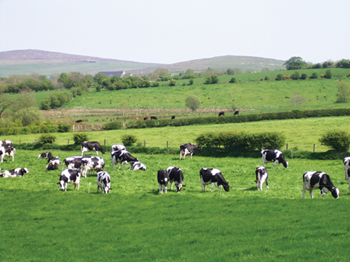Minister Lynch admits anti-suicide campaigner Donal Walsh had ‘more impact than any politician’

DONAL WALSH RIP (16) DIED OVER THE WEEKEND AFTER A LONG BATTLE WITH CANCER
A 16-YEAR-OLD anti-suicide campaigner who died after a long battle with cancer had more of an impact than any politician, a Government minister has claimed.
Minister of State for Disability Kathleen Lynch said Donal Walsh had left an extraordinary legacy behind with his message that life is precious.
“Young people listen to their peers and Donal was such a mature voice in that whole area, and I think that is what struck people about him,” Ms Lynch said.
“When he said when times are difficult, reach out, there is help there – his saying that had far more of an impact than any politician, any radio station and any of those things.”
Donal, from Tralee, Co Kerry was diagnosed with a tumour in his leg when he was 12.
He underwent numerous treatments to fight the disease, which eventually moved to his lung. But he lost his battle over the weekend when he died at home in Blennerville surrounded by his family.
Ireland are now scheduled to reap the benefits of ‘Harvest 2020’
Dairy growth now on track, representing a real prize for the Irish economy in both jobs and added value
The Harvest 2020 targets, which underpin all of the aspirations for growth in the agri-food sector, are largely being met ahead of schedule, except in dairy where quotas are in place until 2015 .
The beef target of 40 per cent growth has been largely achieved as has the pigmeat figure of 50 per cent, mostly based on growth in value to date rather than output. However, output levels are beginning to grow also.
Last week’s announcement by Glanbia Ingredients Ireland of a major investment dairy processing/ value added capacity in Belview, Co Kilkenny, surely means that dairy growth is now definitively on track and represents a real prize for the Irish economy in both jobs and value added .
Analysis prepared for Government and led by Teagasc and TCD looking at the economic multiplier effects of reaching the volume and value growth targets set out inHarvest 2020 , suggested a minimum of 30,000 jobs will be created in the Irish economy and that a maximum of 40,000 jobs is possible.
Dairy growth
Therefore, while Ireland’s record in securing foreign direct investment has set us apart from other EU/IMF programme countries in the last number of years, growth in the agri-food sector – and particularly the impact of this growth on jobs and employment – can be another differentiator.
Therefore, while Ireland’s record in securing foreign direct investment has set us apart from other EU/IMF programme countries in the last number of years, growth in the agri-food sector – and particularly the impact of this growth on jobs and employment – can be another differentiator.
While much of the commentary around the Glanbia investment has focused on the prospect for dairy growth and challenges to achieving it, the reward in terms of jobs and economic activity has perhaps not been as well understood.
Dairy growth is hugely significant because the supply chain required to achieve this growth is primarily based in the Irish rural economy. Furthermore, because the sector is Irish owned its marketing and R&D dimensions are also largely Irish economy based.
The dairy supply chain is not just the 18,000 dairy farms in the country but also the suppliers to those farms as well as upstream secondary processing industries such as infant formula , cream liquor manufacturing, the sports nutrition sector and finally the beef processing sector.
This supply chain impact means that of the €1.4 billion increased annual turnover deliverable by a 50 per cent increase in milk supply following the abolition of milk quotas in 2015, €1.25 billion will stay in the Irish economy.
Whereas agri-food growth is spread right across the regions and counties and the value created is spent primarily in the local Irish economy, inward investment in recent years has tended to be clustered around the Dublin region or in Cork or Galway.
Furthermore, in the case of foreign direct investment (FDI) companies, their input sourcing Irish economy spend does not have these deep roots.
Forfás figures show the overall agri-food sector sources 80 per cent of its inputs in the local Irish economy against 15 per cent locally- sourced inputs for FDI firms.
In announcing plans for investment in processing capacity, Glanbia was in effect enabling its 4,300 milk suppliers to invest in milk supply growth post-EU quota abolition in 2015.
In support of the ambitions of its suppliers to grow, Glanbia has introduced a fixed-price milk scheme for a portion of milk supplies, to act as a counter to the increased milk price volatility experienced after the reductions in EU market price supports.
In addition, all produce from the new facility will be destined for export markets.
The Harvest 2020 report set ambitious targets for growth in the agri-food sector. The principal drivers of this growth are the competitive supply capability of Irish producers and processors across the agri-food sector, combined with the robust sustainable demand for our agri-food products across EU and global food markets.
A key platform of overall agri-business growth is the 50 per cent increase in milk supplies planned post EU milk quota abolition in 2015. This is the first time since the imposition of milk quotas in 1984 that the dairy sector will experience volume growth.
The best illustration of the potential for dairy growth is the fact that in 1984 Ireland and New Zealand both produced 5 billion litres of milk, yet this year New Zealand will produce 20 billion litres while we remain capped at 5 billion, and will remain so until 2015.
The prize to the Irish economy from the delivery of dairy growth is both enormous and unique: a 50 per cent increase in milk supply is worth €800 million annually at farm level and up to €1 .4 billion at processing/factory level/national economy level. More specifically the jobs dividend from dairy growth is substantial and regionally spread.
Changes to Ireland’s mental health law expected soon
PRE-EXISTING VIEWS OF PATIENTS ON TREATMENTS LIKELY TO BE TAKEN INTO ACCOUNT
Existing Irish mental health legislation is “out of sync with international law” where the use of Electro-Convulsive Treatment (ECT) on some psychiatric patients is concerned, NUI Galway law lecturer Charles O’Mahony has said.
He noted, for instance, that where a patient was unable or unwilling to allow ECT it could still be applied to them if that was the decision of two psychiatrists.
Currently it is not necessary that the second psychiatrist involved “would be independent, ie outside of the particular service”, he said.
Nor did Irish law allow for the pre-existing views of a patient on ECT be taken into account, he said.
He was responding to a Sunday Times report yesterday which said an 86-year-old woman suffering from psychotic depression is to be given electric shock treatment following a High Court decision last Friday and despite the resistance of her family.
The woman’s children said that, prior to a deterioration in her health, their mother had made it clear she did not want ECT.
An involuntary patient at a Dublin hospital since last October the elderly woman’s doctors have since concluded she no longer is capable of making decisions about her treatment. They believe ECT would assist her.
On Friday Justice Nicholas Kearns, president of the High Court, granted an application by the HSE to allow her be given ECT.
Speaking to The Irish Times last night Mr O’Mahony said legislation to be introduced in the Dáil in the coming weeks was likely to bring changes to current mental health law .
He said the working group on reform of the Mental Health Act 2001 is to make its final recommendations shortly.
Its interim report last year suggested 25 provisions of the 2001 Act needed further examinations from a human rights perspective.
It was also the case that the Minster for Justice Alan Shatter is to introduce a new Bill on assisted decision-making which was likely to give statutory backing to the pre-existing views of patients on what treatment they should be given should they lose capacity to do so later, he said.
Earthworms slug it out to protect plants


Earthworms are the secret superheroes of the garden, according to new research showing how they offer protection against slugs.
Hidden from view below ground, the humble worms seem to be able to stop slugs munching leaves.
Scientists think they boost plants’ resistance to slugs by increasing their uptake of nitrogen.
Austrian expert Dr Johann Zaller, from the University of Natural Resources and Life Sciences in Vienna, conducted tests that showed the presence of earthworms in the ground reduced the number of leaves damaged by slugs by 60pc.
Jenga the pet Snake is alive & well 'thanks for finding my missing boa constrictor'
THE owners of Ireland’s only albino boa constrictor like above – which was stolen last week – are “over the moon” after being reunited with the pet snake.
The rare snake was found in a pet shop in Dublin, ending a week-long hunt.
Jenga has been with the Lynch family for eight years but thieves took her from their home in Duleek, Co Meath.
“We are very happy to have her back and it is thanks to the publicity in the media,” owner Joanna Lynch said.
“She was gone for a week, but it seems she was in the shop for most of that time so she is in okay condition.” She and partner Darren Ryan (30) had said that if their 6ft-long pet was returned, “we will ask no questions and we have kept to that”.
They got a call from a man who said he’d bought the snake for €100 but sold her on as his girlfriend did not like her.




No comments:
Post a Comment